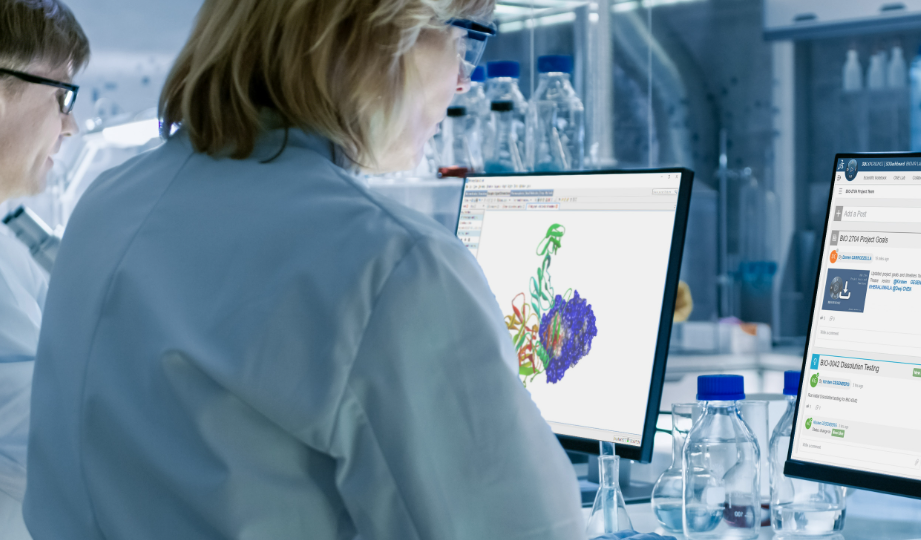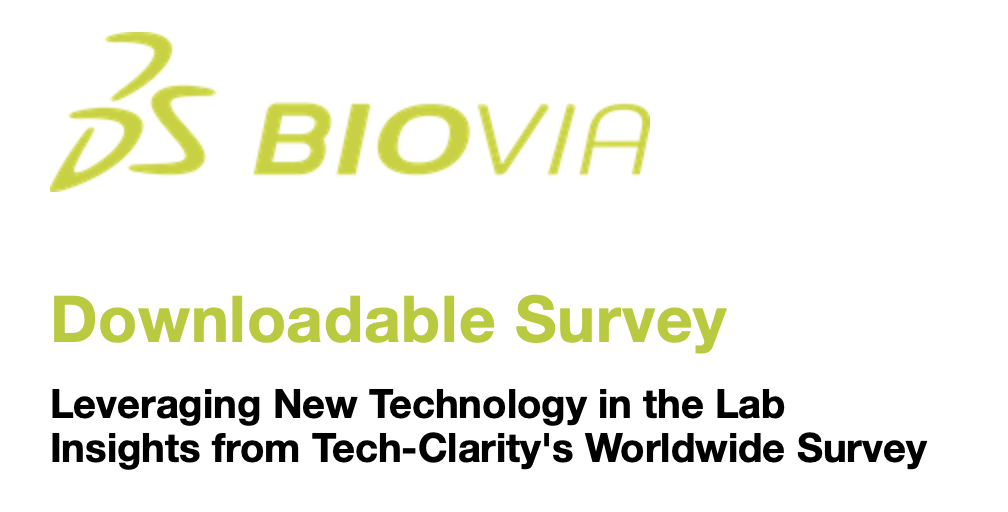Leveraging new technology in lab: Why maximum performance will require more

Post-pandemic, the increase in digitization of clinical trials has allowed for radical changes within the industry, such as remote access to trials for patients, increased connectivity for data sharing, and improved accuracy in patient monitoring and data assessment. Next-generation solutions like Medidata Patient Cloud, Rave EDC and Medidata remote monitoring have changed the way the clinical trials industry conceives and conducts research. Yet, a survey conducted with 222 respondents from labs worldwide indicates that new technologies and processes are insufficient.
Laboratories of varying sizes who use new technologies have reported that the technologies deliver significant business benefits by using good processes and practices, yet constant changes, including changes in processes, materials, and technology, create challenges. As a result, they are not experiencing the total potential value.
Labs agree on the need and value that new technology can bring
The survey reported an overwhelming consensus regarding the importance of new technology in the business. 94% of the respondents believe new technology in the lab is important for their business’s long-term success and profitability. They are unequivocal in their responses that new technology delivers quality, consistency, and innovation for competitive advantage by adding greater agility, sustainability, and regulatory compliance. The cost-savings, often reported in the range of 15%, builds a compelling case.
The benefits brought about by new technologies also address the key priorities of labs – 70% respondents have listed ‘efficiency’ as a priority, 33-35% reporting ‘throughput, knowledge retention, and analysis and insights’, and 28% reporting ‘compliance’.
In addition, using new technology helps to put people in the centre. The vast majority of respondents attest that the new technology supports people extremely well – with flexibility to work remotely becoming a key draw.
Yet performance with new technology remains poor
Despite the raving feedback on new technology, labs have rated themselves poorly on performance. Labs attest that more can be done on the following:
- Throughput
- Cycle Time
- Documentation for audits and compliance
- Analyzing data and making sound decisions
Even the top 20% labs average 3.34 out of a possible 5 on the self-reported performance metrics, even though they have reported having good processes and people practices. This leaves much scope for improvement as well as further introspection.
Change and data are major challenges
Nearly two-thirds (64%) labs see more than 25 new products each year, and 10% of labs see
hundreds of new products per annum. As such, constant change that disrupts processes makes it more challenging to speed throughput and cycle time. The second most commonly cited challenge is an inability to correlate data from multiple sources. Even with great people and processes, achieving data consistency, reliability, accessibility, and timeliness have been reported to be challenging.
Adding to that, changes required in IT architecture – cloud, platform or IoT – can be challenging too.
The impacts of these common challenges vary widely – 46% reporting high costs as a top one followed by slow response time. Both of these, in turn, lead to long cycle times and impact the efficiency of the lab.
So, despite having a strong business case, the challenges brought about by change, data and IT architecture can often diminish the value offered by new technology.
What is the cure?
What can then be done to ensure that new technology delivers the benefits that they promise?
- Focussing on priorities: Labs may benefit from prioritizing new technologies that best serve their priorities and needs. Efficiency, throughput, knowledge retention, analysis and insights, and ease of compliance are reported as the top 5 priorities by over 70% of the labs. Prioritizing technologies that add value in these five areas would be a recommended first step.
- Hardware-based investments: Labs have adopted quite a bit of new technology, some visible to the naked eye, including automated material handling systems, AR, VR, tablets and phones, voice control, robots and cobots, exoskeletons and more. Respondents report high benefits for every single one of these investments.
- Software that Fits: LIMS, CIMS, and LES for execution are the most commonly used applications, followed by Lab Management software. These applications can help address a lab’s challenges for improving performance, and industry pressures may all factor into which applications each lab needs.
- Improving data management and analytics: The majority of respondents report benefits from data lakes/data fabric, blockchain or distributed ledgers, and advanced analytics. However, these work best when the data is harmonized.
Standardization and integration
Digital transformation, data flows, and a mindset shift to data-centricity is now required to unlock the true potential of new technology. Labs have historically been document-centric. Scientists and engineers recorded their work with documents or forms, often on paper. Yet even electronic documentation is often not in a format designed for data sharing. Integration and standardization are the need of the hour now – data must flow between users, applications, and technologies in the lab and between sites.
Yet, most labs currently do not have smooth data flows and easy data access for day-to-day tasks. This is a problem for advanced analytics, which benefit from data across all disciplines, systems, and sites. Nearly half of this response base is either document-centric (11%) or mostly document-centric, moving to data-centric (36%). With this gap identified, data-centricity appears to be a key to ensuring lab performance improves and new technologies deliver maximum benefits.
Focus on data-centricity
To ensure that data scientists and lab domain experts work together closely to generate actionable insights that deliver business value from the data – labs need to focus on data as an asset.
Study supports that data-centric labs get more value from their data and are far more likely than others to do exceptionally well at:
- Reusing data and information (61% vs. 37.5%)
- Knowledge-based decision-making (65% vs. 38%)
When data flows freely and efficiently, people can access the information and knowledge they need far more efficiently, anytime, anyplace, and any method – and the true potential of new technology in labs can be unlocked.
click below for downloading the Biovia Study Report
Latest Posts
Key Topics of the PLA2024India
PLA2024India, 5th edition, promises a programme full of interactions and discussions. 4 focused sessions and 2 training workshops The main theme of #P
14 May 2024
Press Release: PLA® Conferences to partner with IA-Meetings for its 5th Indian Edition.
The Paperless Lab Academy® (PLA) is a leading conference about digital transformation of laboratory and quality processes. Above all, it is about mas
08 April 2024
The #PLA2024Europe programme aimed to highlight the importance of the human factor in digital transformation with several presentations and panel disc
19 March 2024

